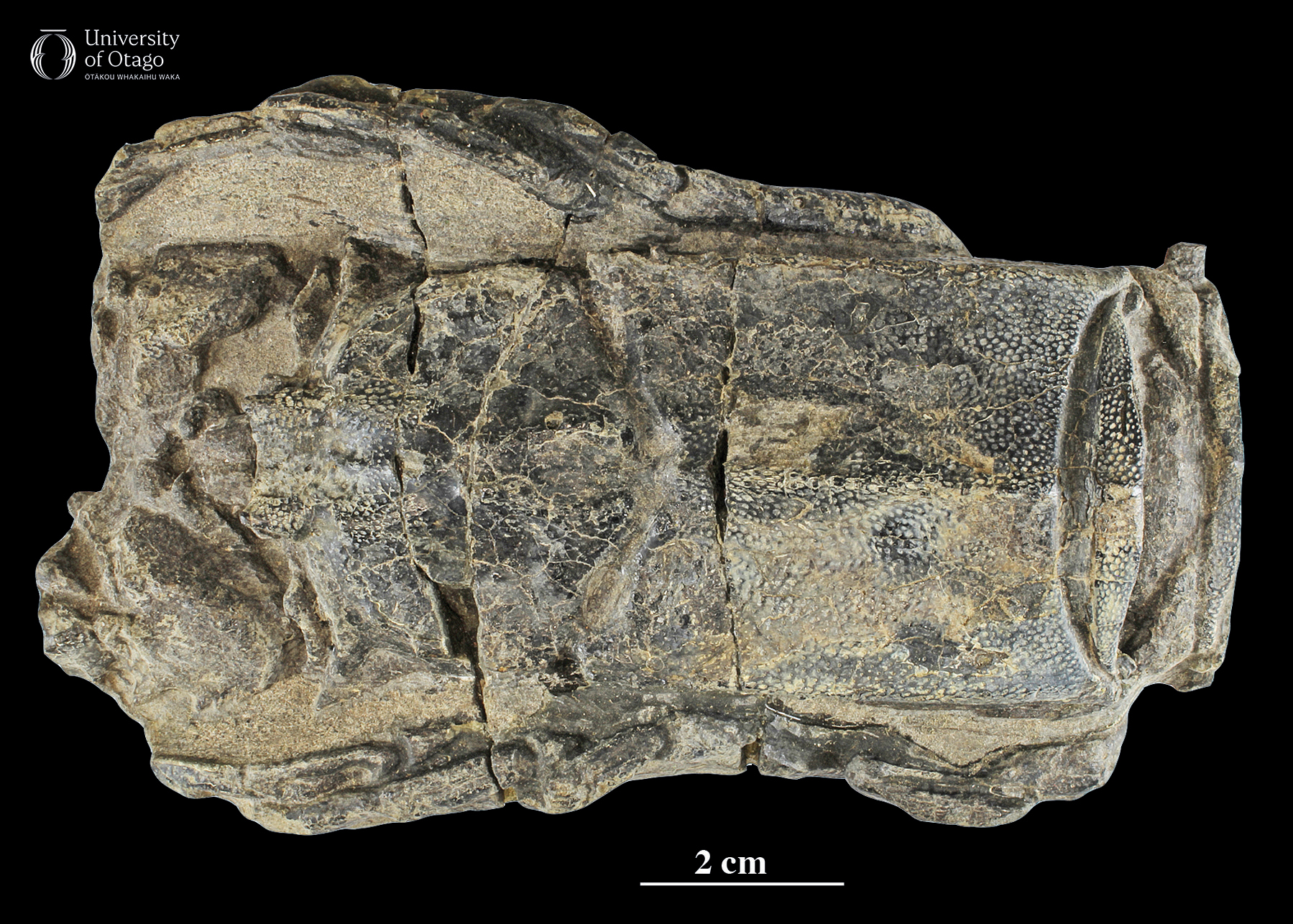52 Spiny lobster preserves sound-producing structures
Arthropoda, Decapoda: Linuparus korura
Three species of spiny or spear lobster in the genus Linuparus within the family Palinuridae live in the Indo Pacific region today. In contrast, 32 fossil species from this genus, ranging in age from the Cretaceous to the Oligocene, are recorded from many places around the world.

Dorsal view of the ancient spiny lobster Linuparus korura (OU 12842) showing the rectangular carapace. Image credit: JH Robinson. |
One of these fossils is housed in the University of Otago Geology Museum collections and was the first example of the genus to be discovered in Aotearoa New Zealand. Collected by Bob Carter from the Otaio Gorge in 1978, the lobster is more-or-less undistorted and still retains antennae, articulated eyestalks and pereiopods. The excellent preservation suggests that this fossil represents an actual animal that was buried in sediment on the sea floor, rather than just a moulted carapace (see: Valley of trilobites, our oldest fossils).
Modern palinurid lobsters produce rasping sounds by rubbing together their flexible antennae as a means of deterring predators. Remarkably, the Geology Museum specimen still possesses these sound-producing structures because the frontal region of the cephalothorax is complete and the basal segments of the antennae are exposed. This was the first time the structures responsible for sound production had been observed in a fossil palinurid lobster.
Modern Linuparus lobsters inhabit mid- to outer-shelf waters at depths of between about 30 and 500 m. Molluscan fossils from the same locality suggest a mid-shelf environment of around 100 to 200m, in moderately warm seas. This fossil Linuparus lobster, like its modern counterparts, probably ate fish and other crustaceans. The species was named Linuparus korura with the species name adapted from kōura, the te reo Māori name for lobster or marine crayfish.
—Written by Daphne E Lee
| Specimen number: OU 12842 | Age: Approximately 40 million years ago (late Eocene, Bortonian stage) |
| Locality: Otaio Gorge, South Canterbury | Rock Formation: Little Pareora Silt |
| Collected by: RM Carter | |
| Citation: Feldmann RM, Bearlin RK. 1988. Linuparus korura n. sp. (Decapoda: Palinura) from the Bortonian (Eocene) of New Zealand. Journal of Paleontology 62:245–250. | |
Evidence of life from a past geological age. Remains like bones, shells or wood, or an impression like a footprint, or some other evidence of life, from something that was alive more than 11,700 years ago.
145 to 66 million years ago.
33.9 to 23.03 million years ago.
Jointed walking legs that are also used in food-gathering.
The process of shedding an exoskeleton in order to grow. Also known as ecdysis.
The extended margin of a continent which is submerged under relatively shallow seas. While the width of the shelf varies between continents, most shelf seas are generally less than 100 metres deep.

